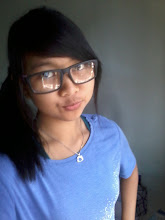Beringharjo market becomes part of Malioboro that is worth
visiting. This market has been center of economy activity since years ago and
its existence has philosophical meaning. The market that had been renovated
several times symbolizes stages of human life that is busily engaged in its
economy fulfillment. Furthermore, Beringharjo is also one of the 'four in one'
poles (consisting of South Square, Sultan Palace, North Square, and Beringharjo
market) symbolizing economy functions.
The area where current Beringharjo market lies used to be forest
of banyan trees. Soon after the foundation of Ngayogyakarta Hadiningrat
Kingdom, i.e. in 1758, the area was used as a place for economy transaction by
the people of Yogayarkta and its vicinities. Only hundreds years later, namely
in 1925, the transaction place had a permanent building. The name 'Beringharjo'
was given by Hamengku Buwono IX, meaning that the place where banyan tree
(bering) used to grow is expected to bring welfare (harjo). Now, tourists
define this place as an enjoyable shopping place.
The front part and the western part of the market are the right
places to find delicious traditional snacks. At the north side of the front
part, you will find round brem (a kind of snack made from the extract of
fermented tubers) that is softer than that of Madiun city and krasikan (sweet
cake made from glutinous rice and palm sugar). In the south part, you will find
bakpia cake filled with mung bean that is sold warm and wet snacks such as hung
kwe and nagasari. Meanwhile, at the back part, usually they sell durable snacks
such as ting-ting made of caramel mixed with peanut.
If you want to buy batik, Beringharjo is the best place because
of its complete collections; ranging from batik cloth to batik clothes made of
both cotton and silk materials, with the prices ranging from tens thousands to
a million. Collection of batik cloth is available in west and north parts of
the market, while batik clothes collection is available almost everywhere in
the west part of this market. In addition to batik clothes, the west part of
the market also offers traditional clothes: surjan, blangkon, and sarong both
woven and batik printed ones. Sandals and bags sold at reasonable prices are
available around the escalator of the west part of the market.


0 komentar:
Post a Comment